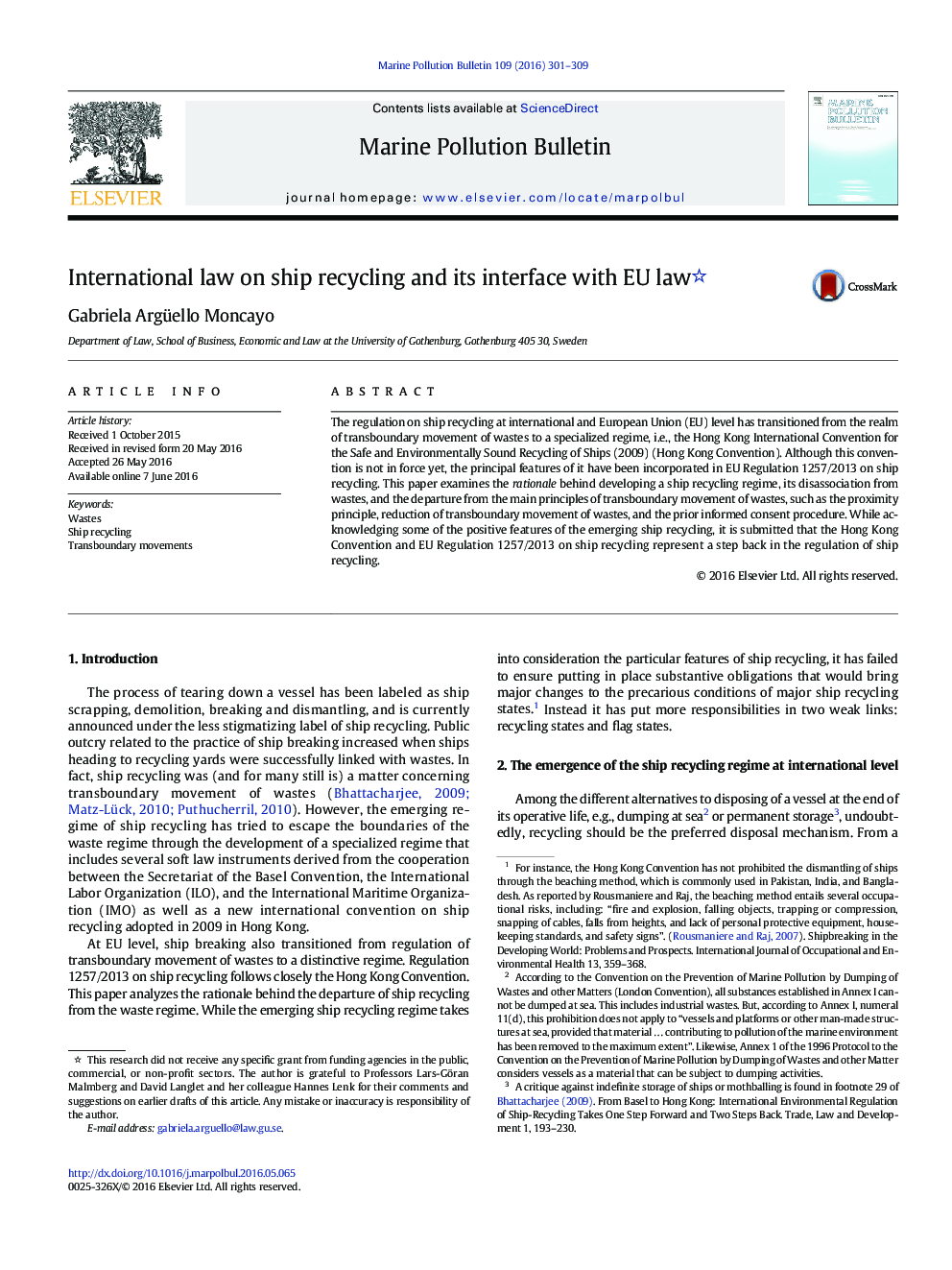| Article ID | Journal | Published Year | Pages | File Type |
|---|---|---|---|---|
| 4476404 | Marine Pollution Bulletin | 2016 | 9 Pages |
•Ship recycling regulation departs from the transboundary movement of wastes regime.•Ship recycling is currently subject to a piecemeal regulatory framework.•More responsibilities are placed on two weak links: Recycling and Flag states.•Management of wastes' obligations shifted from the polluter to the recycling state.•Ships for scrap will continue to follow the path of least resistance.
The regulation on ship recycling at international and European Union (EU) level has transitioned from the realm of transboundary movement of wastes to a specialized regime, i.e., the Hong Kong International Convention for the Safe and Environmentally Sound Recycling of Ships (2009) (Hong Kong Convention). Although this convention is not in force yet, the principal features of it have been incorporated in EU Regulation 1257/2013 on ship recycling. This paper examines the rationale behind developing a ship recycling regime, its disassociation from wastes, and the departure from the main principles of transboundary movement of wastes, such as the proximity principle, reduction of transboundary movement of wastes, and the prior informed consent procedure. While acknowledging some of the positive features of the emerging ship recycling, it is submitted that the Hong Kong Convention and EU Regulation 1257/2013 on ship recycling represent a step back in the regulation of ship recycling.
